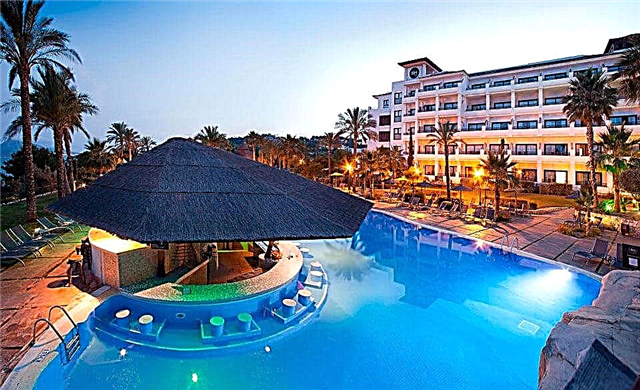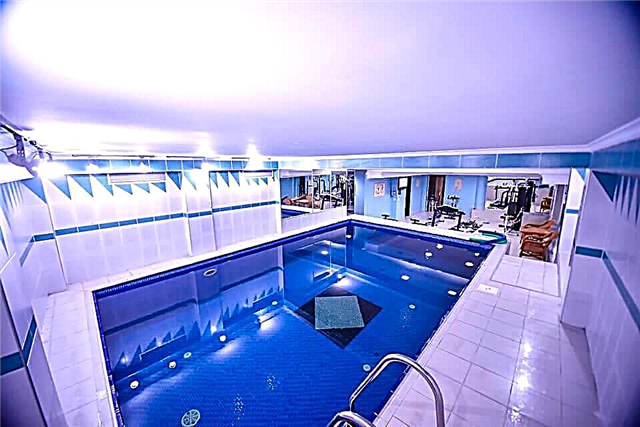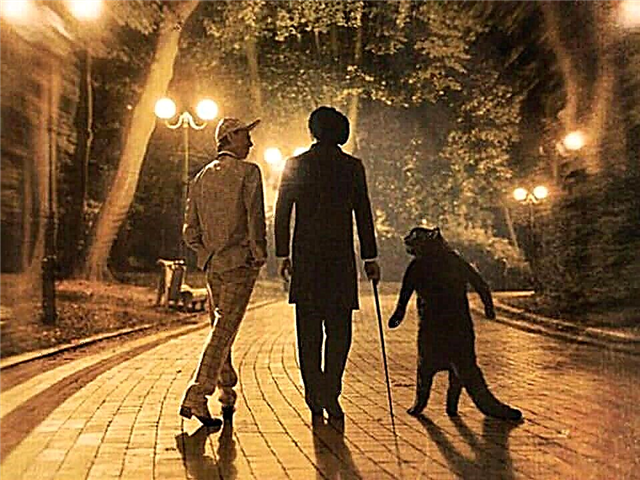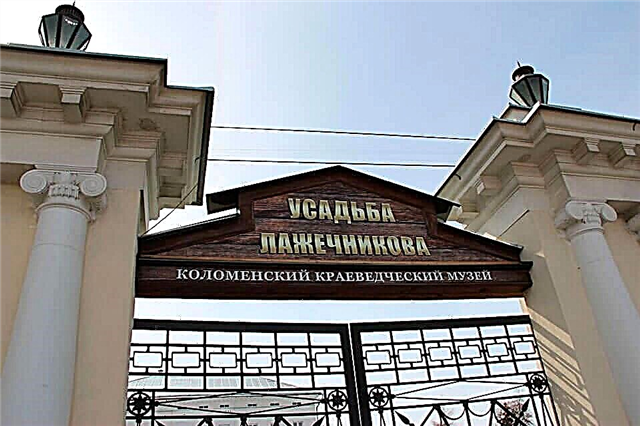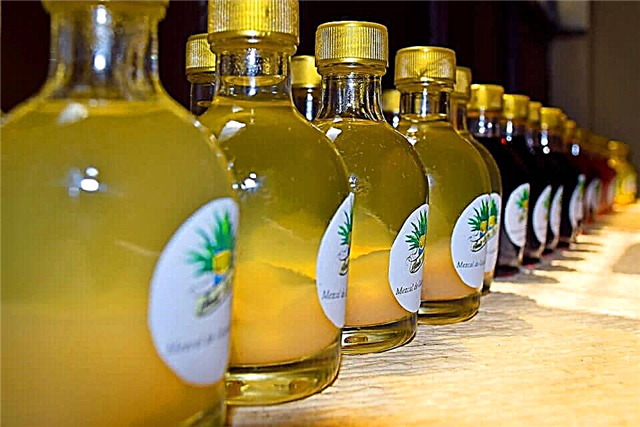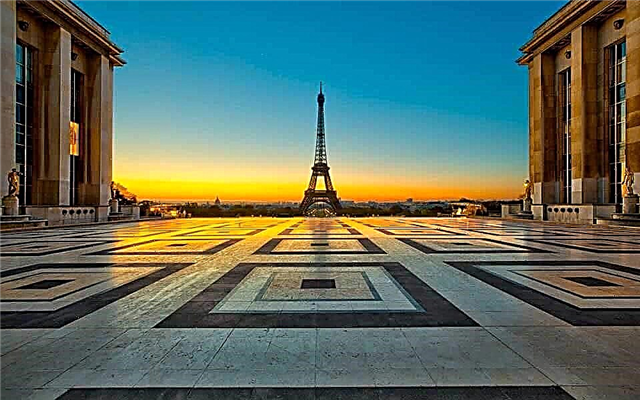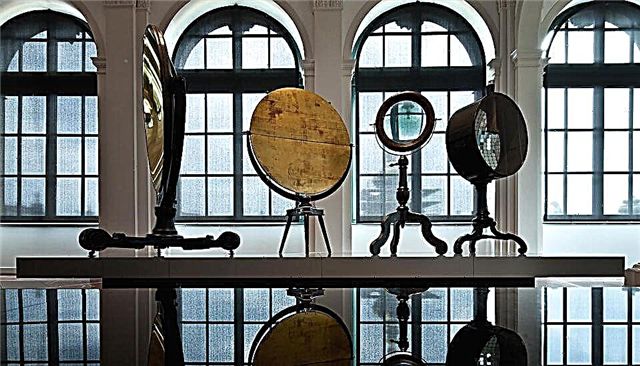For the splendor of Baroque architecture and picturesque landscapes, the German art critic and writer Johann Gottfried Herder called Dresden "Florence on the Elbe". Almost completely razed to the ground in February 1945 and rebuilt from ruins at the end of the 20th century, today the famous city in eastern Germany generously shares its sights and cultural treasures with guests. Our guide will tell you what to see in Dresden in 1 day on your own - an irreplaceable assistant in walks through the magic capital of Saxony.
Zwinger

Theaterplatz 1
The name of the architectural complex, which is the most famous ensemble of baroque buildings in Germany, translates as "the area between the inner and outer city fortification ring." This place is iconic for the capital of Saxony. It is here that the exhibits of the most famous museums are presented, the collections of which occupy a worthy place among the State Art Collections of Dresden. In addition, musical and theatrical events are regularly held on the territory of the Zwinger.
It all started in 1709. On the occasion of the arrival of the King of Denmark in Dresden, the great Elector Augustus the Strong ordered to equip a platz in front of the castle-residence, surrounded by wooden buildings. Two years later, the ruler of Saxony, in love with luxury and Italian architecture, desired to see a complex of luxurious buildings on the site of the parade ground. The monarch's dreams were brought to life by the sculptor Balthazar Permoser and the architect Matthäus Daniel Pöppelman.
The Zwinger, which took 21 years to build, is an example of German Baroque with elements of the Italian school and Viennese imperial style. The courtyard, decorated with fountains and symmetrical flower beds, is framed by the solemn Crown Gate, long walkways and graceful pavilions.
Gallery of old masters
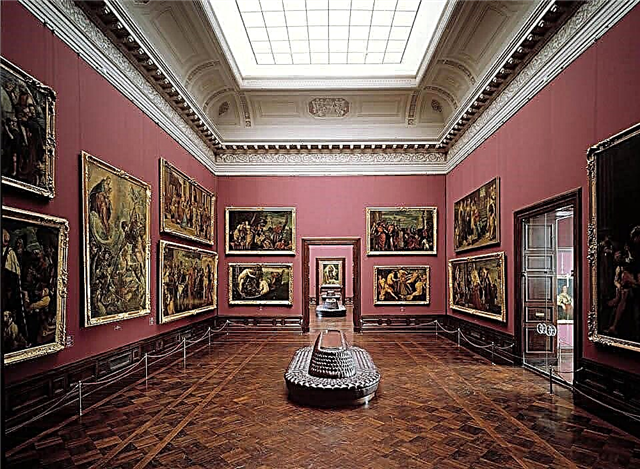
On the left side of the architectural and palace complex, the Dresden Gallery, created in 1722, demonstrates the masterpieces of European painting. Its founder was August II the Strong, a connoisseur of art and a passionate collector of antique paintings. Initially, the magnificent exposition was exhibited in the premises of the former court stables, and only in 1847 received a permanent residence permit in a separate Zwinger pavilion.
A visit to the Gallery of Old Masters is a real gift for fans of painting. The luxurious halls showcase the creations of the geniuses of the French, German, Italian, Spanish and English schools of the 17th-18th centuries, the Flemish Baroque and the Dutch Renaissance. Famous names include Jan van Eyck, Titian, Albrecht Durer, Botticelli, Rubens, Rembrandt, Velazquez. The main treasure of the gallery was and remains the "Sistine Madonna" by Raphael Santi.
Porcelain Museum

The founder of a grandiose collection of ceramics, August the Strong, who called his passionate fascination with fragile material "porcelain disease", by 1721 became the owner of 23,000 items made by masters from China, Japan and the Saxon Meissen. Today, a magnificent porcelain sculpture of the Elector - an exact copy of the Golden Horseman monument - opens the entrance to the museum.
The Zwinger is rightfully proud of the world's largest collection of about 20,000 unique porcelain pieces. In the spacious, light-filled halls, the audience is presented with objects from China (including masterpieces by authors of the Kangxi era), priceless Japanese vases created in 1700 in the Imari style, and an amazing collection of artfully executed figurines of animals and birds. And, of course, the Porcelain Museum proudly presents the works of the famous Meissen masters.
Physics and Mathematics Salon

Founded in 1728, the Physics and Mathematics Salon is a unique museum of clocks, optical, geodetic instruments and instruments that inquiring minds of the 16th – 19th centuries used to measure distance, volume, weight and temperature. The origins of the collection date back to the Dresden Kunstkamera and the Astronomical Observatory, which appeared in the Zwinger in the 18th century.
Currently, here you can get acquainted with astonishing incendiary glasses, clock mechanisms, earth and celestial globes, music boxes, telescopes and the world's only astronomical clock, created in the form of an orbit. The Zwinger Museums are open daily from 10:00 to 18:00. The day off is Monday. The cost of viewing all collections is 12 € (full) and 9 € (reduced).
Fountain "Bathing Nymphs"

The fountains in the Zwinger are everywhere. Four twins decorate the courtyard of the architectural ensemble, murmuring streams decorate galleries, niches and the Pavilion on the Rampart. Among all this refreshing and glittering splendor in the sun's rays, the baroque fountain "Bathing Nymphs" stands out for its magnificent decoration and grandiose size. And although the incomparable composition is hidden behind the walls of the complex, it invariably attracts the attention of guests of Dresden.
German art critic Fritz Loeffler called Bathing Nymphs "an architectural hall that serves as the ceiling of heaven." Balthazar Permoser and Matthäus Pöppelman created a cascade composition of extraordinary beauty and grandeur. The pool is surrounded by embossed walls topped with a balustrade and figures of tritons, satyrs and flirtatious beauties. The play of water and light is watched by marble nymphs hidden in niches, guarded by a vigilant faun.
Semper Opera

Theaterplatz 2
One of the oldest German opera houses dates back to 1841. The building, which was destined to become the cradle of Saxon culture, was erected by the architect Gottfried Semper. The creation of the great architect was destroyed by fire twice: during a fire in 1869 and as a result of an air raid in 1945.
The theater, renovated and opened in 1985, with an auditorium for 1,200 seats, today captivates connoisseurs with its impeccable acoustic qualities and brilliant technical equipment of the stage. The modern repertoire of the Dresden Temple of Melpomene includes classical works and world premieres. It is impossible and unnecessary to list all the performances within the framework of one guidebook.
Suffice it to mention such masterpieces as The Nutcracker, Swan Lake, Othello, The Magic Flute, Faust, Lohengrin. The concerts of the State Chapel of Saxony, which have chosen the Semperoper as their official residence, are also worthy of admiration. For those who could not become the owner of the coveted ticket, the administration of the Semperoper provides the opportunity to take part in a guided 45-minute tour, introducing the magnificent backstage. Price - 11 €.
Hofkirche cathedral

Schloßstraße 24
In 1697, Elector Frederick Augustus I, who was to become king of Poland, converted to the Catholic faith. The example of the ruler was followed by his son, Augustus II. It was he who came up with the idea to build the first Catholic church in the Lutheran Saxon capital. The three-nave Baroque basilica, which became the court church (Hofkirche), opened its doors to parishioners in 1754. Two centuries later, on the night of February 14, 1945, there was no stone unturned from the grandiose building.
Today, the revived Cathedral again welcomes the guests of "Florence on the Elbe" in all its grandeur. The tragedy of 1945 is reminded only by the black stones of the facade, left over from the old church that died in the fire. Three-meter-high figures of apostles and saints adorn the balustrade and niches of the church, whose imposing tower rises 85 meters into the sky.
Inside - the kingdom of light, ornate stucco, white marble and gilding. Above the main altar is a painting by the Saxon artist Anton Mengs. The monumental canvas, 10 m high and 4.5 m wide, depicts the Ascension of Jesus.In the vaulted crypt of the cathedral, 49 members of the ruling Wettin family sleep in eternal sleep. In a special vessel rests the heart of the great Augustus the Strong, whose grave is located in the Polish city of Krakow.
Brühl's Terrace

It's nonsense to visit Dresden and not walk the Brühl Terrace! The 500 m long promenade, stretching between the Karolabrücke and Augustusbrücke bridges, offers an unforgettable view of the historic center, the Neustadt urban area and the Weissen flotilla boats cruising along the Elbe for a river cruise to Saxon Switzerland.
In 1589, on the site of a modern comfortable embankment, a rampart rose. By the middle of the 18th century, the need for fortifications disappeared, and in 1739 the son of the Elector August the Strong gave the land adjacent to the Elbe to his father's favorite - the first minister Heinrich von Bruhl. A few years later, the new owner turned the former defenses into a luxurious promenade for the urban nobility, called the "Balcony of Europe".
Repnin-Volkonsky made the promenade accessible to the public in 1814. After the victory of the Allied troops over Napoleon (the army of King Frederick Augustus fought on the side of the Frenchman) Nikolai Grigorievich was appointed to the post of Governor General of the Kingdom of Saxony.
Golden rider

Neustädter Markt 14
The Augustusbrücke bridge, which begins at Brühl's Terrace, will take you to the city's most famous monument, the gold-blinding copper monument to Augustus the Strong, perched on a rearing stallion. The gaze of the armored Roman legionary ruler is directed towards Poland, the country of which the great elector was proclaimed king in 1697.
The idea of erecting the monument belonged to the ambitious Augustus. The elector, who studied architecture in his youth, took an active part in preparing the project of the monument to himself. The father's business was completed by his son - the "Golden Horseman" appeared on the right bank of the Elbe in 1736, during the reign of August III.
During World War II, the monument was dismantled, dismantled and taken to Pillnitz Castle. The monument returned to its rightful place in 1956. Its restoration was carried out by the sculptor Walter Flemming, who spent 187 g of gold leaf on the restoration.
Academy of Arts

Brühlsche Terrasse 1
The Academy of Fine Arts (Fine Arts) was founded in 1764 as part of a program for the economic and cultural restoration of Saxony after the defeat in the Seven Years' War. At various times, famous painters Adrian Zing, Anton Graff, Bernardo Bellotto and eminent architects Paul Vallot and Gottfried Semper taught here.
The appearance of the building, which adorns the beginning of Brühl's Terrace, arouses genuine interest. The architecture of the building, designed by Konstantin Lipsius, is based on a mixture of Neo-Baroque and French Mannerism styles. The facades of the Academy are strikingly different from each other: for the eastern and northern architects he did not regret stucco molding, magnificent decoration and numerous sculptures; the south and west sides have a more austere, classic look.
The structure is crowned with a ribbed dome. At its top soars, made of copper and covered with gilding, the 4.8-meter figure of Fama, the goddess of legends. In her hands is a laurel wreath, symbolizing the glory of artists. The weight of the winged celestial is 1.7 tons.
Frauenkirche

Neumarkt
The splendid and elegant dome of one of the most famous temples in Germany can be seen from afar. The Frauenkirche is the main symbol of "Florence on the Elbe", which appeared in the city center in 1743, destroyed by the Allied bombing in February 1945 and reopened at the beginning of the 21st century.
The construction of the Evangelical Frauenkirche (Church of the Virgin Mary) started in 1726. It took 17 years for the architect Georg Baer to create a baroque structure of sandstone, admiring the elegance of forms and noble lines. For two centuries, the magnificent temple received hundreds of parishioners every day, until air bombs, like hail falling from the sky on February 13 and 14, 1945, turned the holy house into ruins.
The Frauenkirche revival began in 1994 and lasted 11 years. Thanks to archaeological excavations, restorers were able to use miraculously preserved remains of the facade and interior decoration. In 2005, the long-awaited consecration of the church took place with its stunning façade and radiant interior.
Opening hours: daily from 10:00 to 18:00 (break from 12:00 to 13:00). On Sunday, due to Church services and ordinances, the visit time may be changed. The entrance is free. The ticket price for those wishing to climb the Frauenkirche dome via a 50-meter spiral staircase is 8 €.
Kreuzkirche

An der Kreuzkirche 6
The history of the Kreuzkirche dates back to 1168, when a Romanesque basilica appeared on the site of the future Lutheran cathedral, rebuilt in 1388 and named Kreuzkirche (Church of the Cross). The first Protestant service, conducted by the German religious reformer Martin Luther, took place in the temple on July 6, 1539.
The Kreuzkirche acquired its modern look, combining elements of Gothic, Classicism and Late Baroque as a result of the reconstruction of 1792. Since then, the church has been destroyed twice, the last of which happened in 1945. Recovery began a year after the end of World War II and lasted 9 years.
Today, the main Protestant temple of the city is not only a place for prayer, but also a concert venue. Organ music sounds every week in a spacious hall, striking with modesty and ascetic decoration, and Saturday services, like 700 years ago, are accompanied by the singing of a choir consisting of 140 boys.
Dresden Castle Residence

Taschenberg 2
According to the surviving city archives, the first mentions of the defensive structure, which later became the home of members of the Wettin family, date back to 1289. Over the course of several centuries, the fortress on the banks of the Elbe was rebuilt many times, each time acquiring features of new architectural trends: medieval Gothic, Baroque and Renaissance. In 1548, as a result of a grandiose restoration carried out by decree of the Elector Moritz of Saxony, the oldest building in Dresden received the status of an official residence.
Today, in the spacious rooms of the castle, the Turkish Chamber, introducing the masterpieces of Ottoman art, the Hall of the Giants, which stores about 400 types of ancient ceremonial weapons and armor, the Numismatic and Engraving cabinets, exhibit their collections. But the main treasure of the former residence of the electors and kings of Saxony is the treasures of the Green Vault Museum, located in the south-western tower of the palace.
Museum "Green Vaults"

About 4,000 exhibits include a collection of jewels and pieces of jewelery art, which began in the 18th century by Augustus the Strong. The work of his father was continued by August III - during his reign, the exposition expanded significantly and occupied 9 halls. Fortunately, the bombing of February 1945, which destroyed the city, did not damage the precious artifacts - the treasures of the monarchs were transferred to the Königstein fortress for safekeeping in advance.
The flagship of the collection is the world's largest pear-shaped diamond, bought by August III in 1742. The value of the jewel was 400 thousand thalers, which exceeded the budget for the construction of the Dresden Cathedral. The weight of the delightful stone, dazzling with the play of light and an extraordinary apple-green hue, is 8.2 g. In addition to the priceless diamond, in the halls of the museum you will find unique relics:
- The Amber Cabinet is a gift from the Prussian King Friedrich Wilhelm.
- A coffee set with 45 pieces of gold, decorated with enamel, ivory and diamonds.
- Cherry pits engraved with 185 portraits (visible with a magnifying glass).
- A gift from Peter I - a golden cup of Ivan the Terrible, decorated with sapphires and pearls.
The museum exhibits can be viewed daily (except Tuesday) from 10:00 to 18:00. The ticket price is 12 €.Children under 16 are admitted free of charge.
Stables yard

Augustusstraße 1
The stable yard is part of the castle-residence complex. From the north, it is adjoined by a two-storey building with a gallery, the white Tuscan columns of which are decorated with hunting trophies and the coats of arms of the powers that be living in the palace. The central part of the building is decorated with a sundial showing the current time, days and months.
The stable yard appeared on the map of Dresden in the 16th century. Initially, this place was used for celebrations and knightly tournaments. During the reign of King Frederick Augustus II, the stables were converted into an art gallery, where portraits of members of the ruling Wettin dynasty were exhibited, and later - military uniforms and weapons.
At the end of November, an unusual Christmas market opens on the territory of the Konyushenny Dvor - a medieval bazaar. Its visitors go on a journey through time. Just like 500 years ago, the lights of blacksmiths are burning here, pottery circles are circling, fragrant punch is brewed in huge cauldrons, and barkers loudly praise their various goods.
Panel "Procession of Princes"

The outer side of the Konyushenny Dvor gallery leading to the castle-residence is also noteworthy. Its decoration is a unique panel, the creation of which took 25 thousand seamlessly laid porcelain tiles from the famous Meissen factory. An unusual 101.9 m long canvas depicts a horse procession. Its 94 participants include princes, kings, scientists, artists, peasants and soldiers. The procession is headed by Konrad the Great - the founder of the Wettin dynasty.
The grandiose panel was created in 1876 by Wilhelm Walter. The artist used the technique of sgraffito, popular at that time, - a relief drawing made using layers of colored plaster superimposed on each other. In 1907, the work of art was transferred to porcelain tiles to protect it from the weather and piercing winds.
Cholera Fountain (Fountain of Gratitude)

Kleine brüdergasse
One of the few representatives of the neo-Gothic architectural style, so rare in the Baroque Saxon capital, is the fountain, designed in 1842-1845 by the founder of the Dresden Opera House, Gottfried Semper. The structure, 15.2 m high, imitates the spire of a Gothic cathedral placed in an octagonal granite basin, admires with its gloomy beauty, statues of saints, figures of fantastic creatures and the murmur of 40 water jets.
The fountain owes its appearance to Baron Eugen von Gutschmid, who decided to perpetuate in stone the memory of the miraculous overcoming of cholera. An epidemic of a fatal disease raged in Saxony in 1840 and claimed thousands of lives. It is noteworthy that the fire of 1945 did not affect the composition. The cholera fountain is one of the few buildings that have survived to this day in their original form.
Tip: The fountain is located a stone's throw from the Zwinger, opposite the historic Sophienkeller restaurant. In this authentic gastronomic establishment, you will taste the favorites of August the Strong and discover what real Saxon cuisine tastes like.
Monument to Fyodor Dostoevsky

Ostra-Ufer 2
The Saxon capital played an important role in the fate of the great son of Russia - FM Dostoevsky. The writer first visited the city in 1862. Five years later, the family of the author of "Crime and Punishment" was hiding on the banks of the Elbe from creditors, and two years later the eldest daughter of Fyodor and Anna Lyubov was born here, baptized in the Orthodox church of St. Simeon Divnogorets. The famous novels "The Eternal Husband" and "Demons" were written on German soil.
In 2006, on the day of the 185th anniversary of Fyodor Mikhailovich, a bronze figure of the genius Russian writer appeared next to the building of the Congress Center on the embankment - an almost exact copy of the monument created in 1997 and installed on Moscow Vozdvizhenka. The author of both compositions is the Russian sculptor Alexander Rukavishnikov. Vladimir Putin and Angela Merkel attended the opening ceremony of the Dostoevsky monument in Dresden.
Yenidce

Weißeritzstrasse 3
A little away from the main attractions, 700 meters from the Dostoevsky monument, there is an amazing structure 60 meters high, 20 of which are on the dome decorated with multi-colored glass. The striking building invariably attracts attention with architecture unusual for Europe, combining elements of the Moorish style and Art Nouveau. The majestic facade is decorated with ceramic mosaics, tiles and artificial sandstone.
At the beginning of the 20th century, industrialist Hugo Zitz, whose work of life was the production of cigarettes, decided to build a tobacco factory in Dresden. No sooner said than done. In 1909, an original building appeared on Weißeritzstrasse. Its prototype was one of the mosques in Cairo, seen by an entrepreneur during his Egyptian trip.
The new factory was distinguished not only by foreign architecture. The architect Hermann-Martin Hammich, who headed the project, implemented the most advanced engineering ideas of the time. So, in the construction of the building, load-bearing reinforced concrete structures were used, high minarets hid the stove and exhaust pipes, and the interior rooms were equipped with ventilation.
Tobacco workshops operated in Yenidse until 1953. Today, within the eastern walls there are offices, a restaurant with a beer garden and the show-theater “1001 Fairy Tale”.
Park Grosser Garten

Hauptallee 10
We recommend that you end your fascinating walk around Florence on the Elbe, relax among the age-old trees, admire the fantastic landscapes and graceful architecture in the largest city park, whose area is 155 hectares. In 1676, the forest zone began to be used as a hunting ground for the local nobility, but after 7 years the city authorities decided to set up a luxurious park here.
The green oasis attracts visitors with shady alleys, picturesque ponds, baroque sculptures and fountains. On the territory there are a puppet and summer theaters, a tropical greenhouse and a zoo. For the convenience of visitors, a miniature railway with a length of 5.5 km operates in the Grosser Garten.
The open retro locomotives Liza and Moritz, carrying passengers at a speed of 20 km / h, recently celebrated their 70th anniversary. In the center of the park is its main attraction - the Summer Palace, built in 1683, which is a classic example of the Saxon Baroque.
How to get from the airport to the city
10 km from the center of the capital of Saxony, in the northern district of Kloche, there is the Dresden airport, which receives domestic and international flights. You can get from the air gate "Florence on the Elba" to the city by:
- S-Bahn trains on the S2 line. Trains run every 30 minutes. The ticket price is 2.40 €. Travel time (to Bahnhof Neustadt train station) - 12 min.
- Bus route number 77. It will take you to the Infineon-Nord station, where you can change to tram 7 and get off at the Albertplatz or Pirnaischer Platz stops. The fare is 2.40 € (the ticket is valid for 120 minutes).
The most convenient form of transportation is a taxi. Travel time is 20-25 minutes. Using the Kiwitaxi transport service, you can choose and book a car even before arriving on German soil. The driver, armed with a sign with your name, will be waiting in the arrivals hall. For groups of 5-7 people or tourists traveling with large luggage, the company offers a transfer by personal minibus.
Advice. The main attractions of Dresden are compactly located in the center. Therefore, if the purpose of your trip to the Saxon capital is only to get acquainted with interesting places and collections of world famous museums, choose a hotel in the districts of Innere Altstadt, Friedrichstadt and Innere Neustadt. GuruTurizma advises fans of budget travel to pay attention to inexpensive three-star hotels of the Ibis chain: Ibis Dresden Zentrum.




